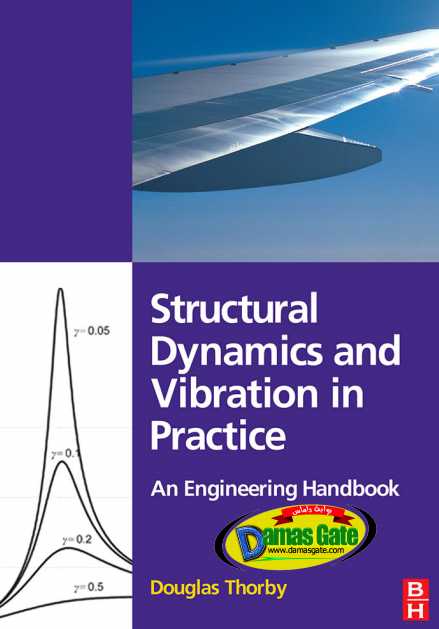Structural Dynamics and Vibration in Practice
Preface
This book is primarily intended as an introductory text for newly qualified graduates,
and experienced engineers from other disciplines, entering the field of structural
dynamics and vibration, in industry. It should also be found useful by test engineers
and technicians working in this area, and by those studying the subject in universities,
although it is not designed to meet the requirements of any particular course of study.
No previous knowledge of structural dynamics is assumed, but the reader should be
familiar with the elements of mechanical or structural engineering, and a basic knowledge
of mathematics is also required. This should include calculus, complex numbers
and matrices. Topics such as the solution of linear second-order differential equations,
and eigenvalues and eigenvectors, are explained in the text.
Each concept is explained in the simplest possible way, and the aim has been to give
the reader a basic understanding of each topic, so that more specialized texts can be
tackled with confidence.

The book is largely based on the author’s experience in the aerospace industry, and
this will inevitably show. However, most of the material presented is of completely
general application, and it is hoped that the book will be found useful as an introduction
to structural dynamics and vibration in all branches of engineering.
Although the principles behind current computer software are explained, actual
programs are not provided, or discussed in any detail, since this area is more than
adequately covered elsewhere. It is assumed that the reader has access to a software
package such as MATLAB
A feature of the book is the relatively high proportion of space devoted to worked
examples. These have been chosen to represent tasks that might be encountered in
industry. It will be noticed that both SI and traditional ‘British’ units have been used
in the examples. This is quite deliberate, and is intended to highlight the fact that in
industry, at least, the changeover to the SI system is far from complete, and it is not
unknown for young graduates, having used only the SI system, to have to learn the
obsolete British system when starting out in industry. The author’s view is that, far
from ignoring systems other than the SI, which is sometimes advocated, engineers
must understand, and be comfortable with, all systems of units. It is hoped that the
discussion of the subject presented in Chapter 1 will be useful in this respect.
Download
http://s18.alxa.net/s18/srvs2/02/001...n.Practice.rar
